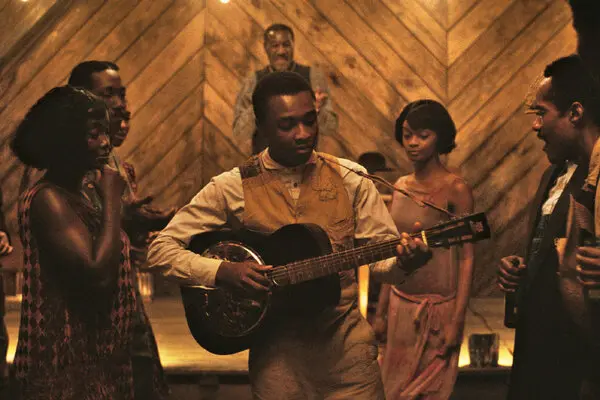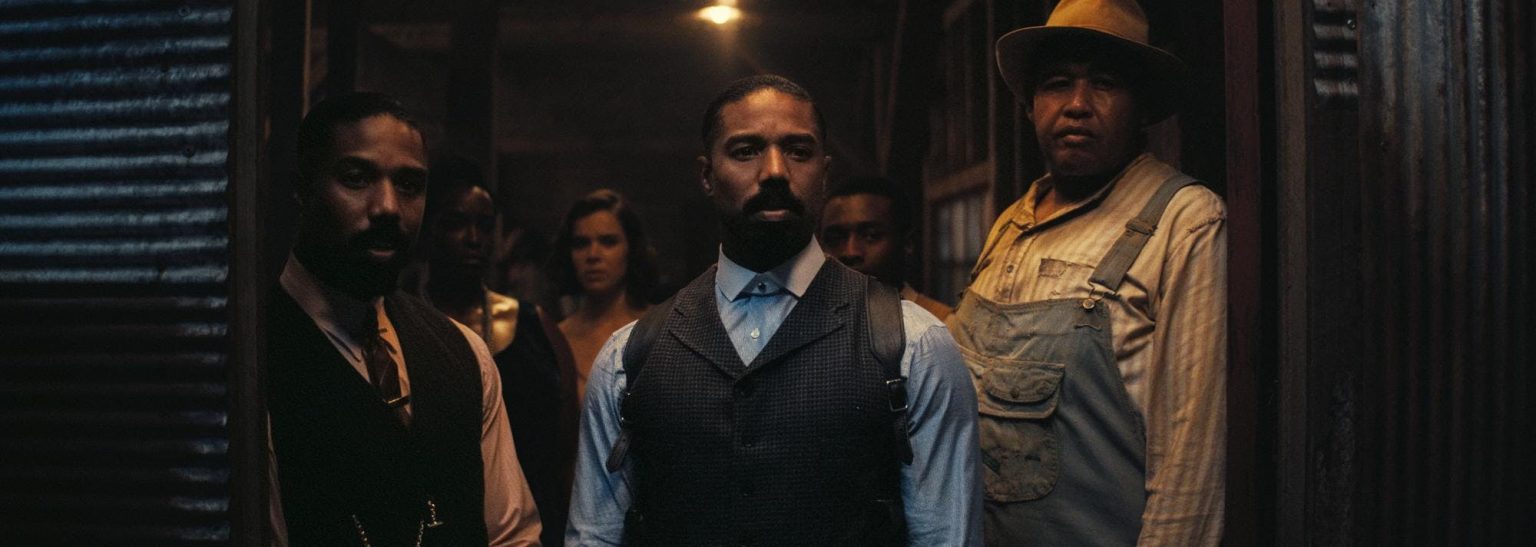Movies about the blues don’t come around very often. Movies about the blues made by Black creators are even rarer. But Sinners, starring Michael B. Jordan, is not only a blues movie. It is not only a blues horror movie. It is a blues horror movie written and directed by one of the most prominent Black directors in Hollywood today: Ryan Coogler.
Set in Mississippi in 1932, Sinners is the story of twins, Smoke and Stack, who return from Chicago to open a juke joint outside of Clarksdale, birthplace of the blues. The twins, veterans of World War I, have attained a level of affluence rarely seen in Clarksdale. They also have a level of violence not common in Clarksdale. They do what they want, when they want, to whom they want. On their way to open the nicest juke joint with the best entertainment in the Delta, they purchase an old mill and recruit a young guitar player, an old harmonica player, a bouncer, a cook, a sign maker, and many other hands. To the SmokeStack Twins, money is no obstacle.
Coogler does an amazing job bringing 1930s Clarksdale to life. Having been to Clarksdale a few times, I could envision Coogler’s Clarksdale over present-day Clarksdale. Everything fit, from the station to the markets to the settlements to the cotton fields. There is even a Chinese family who owns two markets, one on the white side of the main street and one on the Black side. I definitely recommend watching videos on Mississippi’s Chinese population if you aren’t sure what role they played in segregated Mississippi.

The first half of Sinners is predominantly about the SmokeStack twins and their juke joint. Once assembled, Coogler presents us with one of the best musical scenes in recent cinematic history. The juke joint scene – best seen in IMAX – is a tour de force of minority music, from the blues to Afrocentric Rock to Hip-Hop to Chinese dance. It is important to remember the juke joint, like the dance club today, was a safe place for Black people to escape the grind of daily life in Mississippi – a place to escape from Jim Crow and White supremacy. The juke joint was their outlet on the outskirts.
The horror of Sinners escalates soon thereafter as a trio of white performers asks to enter the juke joint. While their words are pure, their intentions are not. A lot of analogies can be made of the white performers and their coded rhetoric. Perhaps the trio is all of White culture and mainstream commercialization, or perhaps they are symbolic of European minority groups that tried to ally with the Black population only to abandon them when times were hard, or perhaps the trio are a metaphor for blues societies who say “No Black, No White, Just Blues” and claim to “Keep the Blues Alive” without Black representation. Whatever their modern face, they have a desire to infiltrate the Black juke joint and control Black spaces for a nefarious reason.
The second half of Sinners is a conflict to control the juke joint. Coogler brilliantly incorporates the folklore and superstition of the devil and demons from beyond the grave. Doorways, for example, play a large role in the antagonists’ ability to spread evil. There are also mentions of mojo, hoodoo, tokens, and other superstitions that helped give comfort to low income and low education fieldhands in a world in which they had little physical power.
Above the supernatural, the blessed, or the mortal, the music itself is the most powerful entity in Sinners. Coogler depicts an underlying struggle for the young guitar player with his preacher father who believes the guitar and the blues lifestyle is heathenistic and will only lead to sin. Old Bluesman Delta Slim uses his harmonica to express his feelings for a friend who was lynched by white supremacy. Music drives passion and lust and, without giving away any spoilers, music and instruments play a huge role in the final showdown.
If it seems like I emphasized race often in this review, that’s because Sinners is about race. Race is unavoidable and undeniable in the film. Sinners is Black horror about Black people in Black spaces. It is also a blues movie, because the blues is Black music. Its portrayal of the blues is rich and powerful. The characters live the blues, the soundtrack is very blues-heavy, and the post-credits scene brings the blues to the present day through a living blues legend.
An easy review would say Sinners is Crossroads meets From Dusk to Dawn. But Sinners is bluesier than Crossroads. It is bluesier than Black Snake Moan. It is bluesier than Cadillac Records. It is bluesier than The Blues Brothers. Given the social layers, the mythology, and the attention to cultural detail, Sinners might be the most blues movie ever. Perhaps the popularity will lead to a new wave of fans at blues concerts and performances. Perhaps there will be a wave of new blues stories.
From the juke joint to the theater, we could all use more Sinners in our lives.
Grade: 5 Blues Vampires stars out of 5


